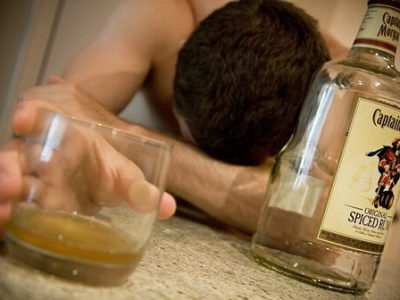An oft-repeated mantra rules the college party scene: “it’s not alcoholism until after college.” How deep does that sentiment run among college students?
On a typical weekend night, binge drinking for sport remains both widespread and widely accepted among the collegiate population, with 72 percent of drinkers between the ages of 18 and 20 and 43 percent of drinkers ages 21 and up, reporting at least one binge drinking session within the last month, according to the U.S. Department of Justice. The Centers for Disease Control and Prevention state that consequences of long-term binge drinking include alcohol poisoning, high blood pressure, stroke, liver disease, neurological damage and sexual dysfunction, as well as danger for engaging in high-risk activities like drunk driving or unprotected sex. Clearly unsafe drinking rituals are detrimental, but alcohol continues to be a staple of college socializing—why?
Many college students are reluctant to see binge habits are problematic. “I think most people are binge drinkers,” stated Syracuse University student Eric Ladabouche, “but I wouldn’t consider that addiction.” While students like Ladabouche are correct in realizing that binge drinking habits do not necessary equate with full-blown presentation of alcoholism, nonchalant attitudes about excessive drinking mask those students who do develop alcoholism in their college years and stereotypes about addiction and rehabilitation make students more reluctant to reach out for help.
“None of us want to be on the outside of a given social setting,” said Moe Briggs, regional director of the Maryland-based Kolmac Clinic, in an e-mail interview. Addiction can be associated with a “moral fault or character flaw,” which might explain why people, especially those in highly social environments, like party-filled college life, might be reluctant to admit there is problem. CDC reports indicate that “as few as three-five percent of all those individuals who could be classified as having a drug addiction actually get the treatment.” Briggs said that while less young adults come in for intensive outpatient treatment, there is still a significant population of those who “do not meet the full criteria for dependence, but might need an intervention [and] evaluation to “short circuit” illegal [or] illicit use of alcohol and drugs”.
Still, some students recognize the benefits of seeking help through rehabilitation. University of Michigan student Tanvi Ratani admitted that her immediate associations with those in rehab involve patients looking “unkempt, bags under eyes, etc.,” but added, “I know that’s not actually the case, [but]someone in rehab is often looked at as an extreme character […] and in general I think we still stigmatize any sort of mental issue, even addiction.”
Ladabouche cited media as a big influence on his perceptions and associated rehabilitation, specifically with “certain stars that are in and out of rehab” but he has had some personal experience with rehab– an acquaintance of his went in for rehab for alcohol addiction. “It actually made a really good difference for them,” remarked Ladabouche. He highlighted the importance of the symbolic act of trying to get better which is nothing to be ashamed of or mocked– “it takes courage to admit you have a problem and be willing to seek help.”
While shows like ‘Intervention’ and ‘True Life’ have given college-aged students some examples of addiction, cases are often the most exaggerated and scandalous forms of addiction. Celebrities who go to rehab also set forth the image of rehabilitation as treatment that's only necessary for those who are, as Ratani said, an “extreme character.”
Not all drinking necessitates intervention, but re-evaluating the stereotypes surrounding addition and rehabilitation programs can be an important first step towards changing the culture that we drink in. “Education about addiction and treatment is the best way to change public perception about this chronic disease,” said Briggs.



















